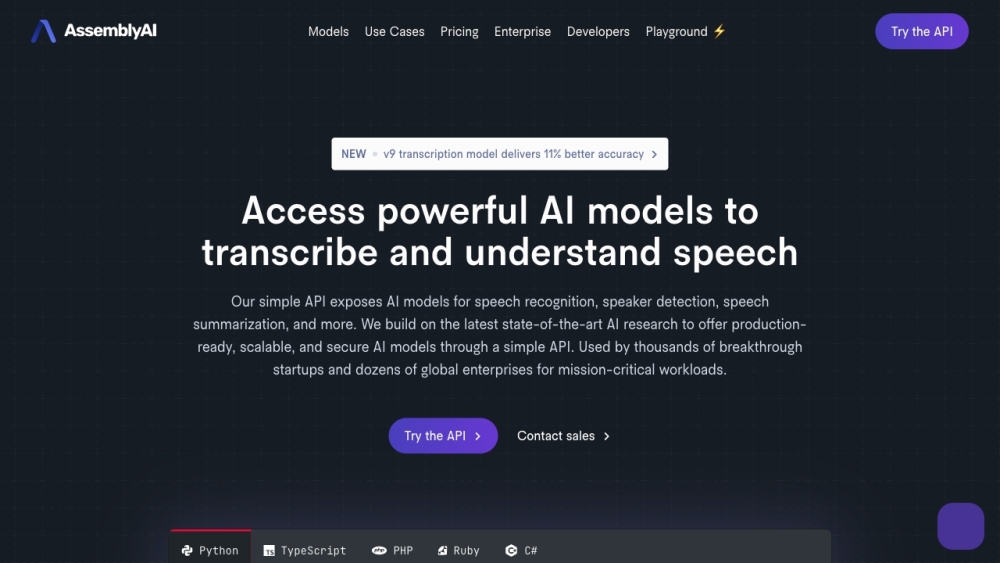FAQs About AssemblyAI
What Exactly is AssemblyAI?
AssemblyAI is a robust platform offering AI-driven tools for transcribing and comprehending speech. Its user-friendly API grants access to fully operational AI models tailored for transcription and speech analysis.
How Do I Utilize AssemblyAI?
To utilize AssemblyAI, simply incorporate its API into your software or services. By making API calls, you can transform audio files, video clips, and real-time speech into text. Furthermore, features like speaker identification, timestamping words, filtering inappropriate language, and defining custom lexicons are available. The Audio Intelligence models and the LeMUR framework also empower developers to craft sophisticated AI solutions involving voice data.
What Capabilities Does AssemblyAI Offer?
With AssemblyAI, you have the ability to convert audio and video materials into text, interpret audio data for different workflows, develop LLM applications using voice data, extract valuable information from call logs, caption and categorize video content, and effortlessly document and examine virtual meetings.
How Can I Start Using AssemblyAI?
To begin using AssemblyAI, connect its API to your systems or services. You can then send API requests to change audio files, video clips, and live speech into text. Moreover, take advantage of the Audio Intelligence models and the LeMUR framework for enhanced speech recognition and constructing AI-powered applications using voice data.
Which Features Stand Out in AssemblyAI?
The standout features of AssemblyAI include transcribing audio and video, interpreting audio for business processes, building LLM applications using LeMUR, extracting detailed data from call records, creating captions, classifying, and moderating video content, and easily documenting and analyzing virtual meeting interactions.
What Are Some Practical Use Cases for AssemblyAI?
Practical use cases for AssemblyAI encompass telephony systems, video processing platforms, virtual meeting tools, and media analysis frameworks.
